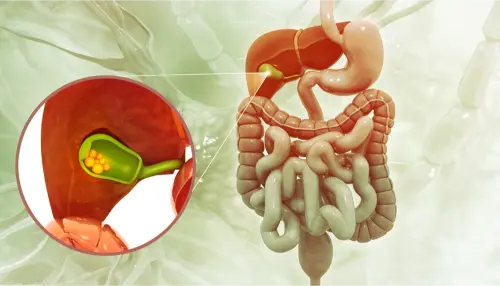Gallstones are a common medical condition that can cause significant discomfort and complications if not addressed promptly. Understanding the signs, symptoms, causes, and treatment options for gallstones is essential for managing this condition effectively.
What Are Gallstones?
Gallstones are solid particles that form in the gallbladder, a small organ located under the liver. These stones can vary in size and composition, with the two main types being cholesterol gallstones and pigment gallstones. Cholesterol gallstones are the most common and are primarily composed of hardened cholesterol. Pigment gallstones, on the other hand, consist of bilirubin and can develop due to certain medical conditions, such as liver cirrhosis or infections in the bile ducts.
Signs and Symptoms
Gallstones can be asymptomatic, meaning many people may not realize they have them. However, when symptoms do occur, they can include:
● Pain: The most common symptom is a sudden, intense pain in the upper right abdomen, which can radiate to the back or right shoulder. This pain, known as biliary colic, often occurs after eating fatty meals and can last from a few minutes to several hours.
● Nausea and Vomiting: Accompanying the pain, individuals may experience nausea and vomiting.
● Jaundice: If a gallstone blocks the bile duct, it can lead to jaundice, characterized by yellowing of the skin and eyes.
● Fever and Chills: These symptoms may indicate an infection in the bile ducts or gallbladder, requiring immediate medical attention.
Causes and Risk Factors
Gallstones form when there is an imbalance in the substances that make up bile, such as cholesterol and bilirubin. Several factors can increase the risk of developing gallstones, including:
● Obesity: Excess body weight can lead to higher cholesterol levels in bile.
● Diet: A diet high in fat and cholesterol and low in fiber can contribute to gallstone formation.
● Age and Gender: Women and individuals over 40 are at higher risk.
● Medical Conditions: Conditions such as diabetes, liver disease, and certain blood disorders can increase the likelihood of gallstones.
● Rapid Weight Loss: Losing weight too quickly can cause the liver to release extra cholesterol into bile, leading to gallstones.
Treatment Options
Treatment for gallstones depends on the severity of symptoms and the presence of complications. Common treatment options include:
● Watchful Waiting: If gallstones are asymptomatic, doctors may recommend monitoring the condition without immediate intervention.
● Medications: Oral medications can help dissolve cholesterol gallstones, although this process can take months or years and is not always effective.
● Surgery: The most common treatment for symptomatic gallstones is cholecystectomy, the surgical removal of the gallbladder. This can be performed through traditional open surgery or minimally invasive laparoscopic surgery.
● Non-Surgical Procedures: In some cases, procedures such as endoscopic retrograde cholangiopancreatography (ERCP) can be used to remove gallstones from the bile duct.
Gallstones can range from being a minor inconvenience to causing severe complications. Recognizing the signs and symptoms, understanding the causes, and exploring treatment options are crucial steps in managing this condition. If you suspect you have gallstones or are experiencing related symptoms, consult with a healthcare provider to determine the best course of action for your individual situation.

